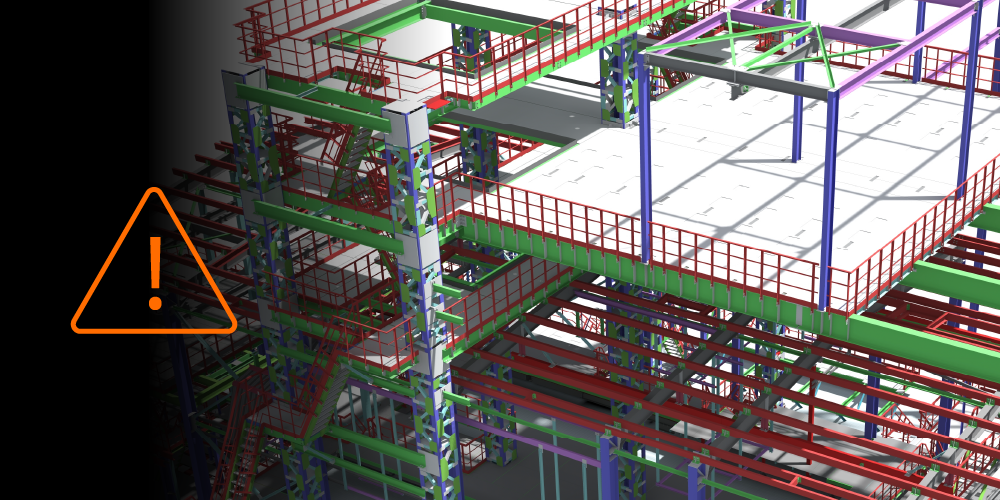Related Articles
— 5 min read
Moving Beyond Analogue: Why Civil Contractors Must Modernise Processes

Last Updated Sep 25, 2025

Will Carpenter
Senior Strategic Product Consultant, Procore
10 articles
Will is a Senior Strategic Product Consultant with a passion for utilising technology to enhance project workflows and efficiency in the construction industry. He plays a crucial role in assisting construction companies in maximising Procore's benefits.
With over a decade of experience in the construction industry, predominantly as a Civil Infrastructure Engineer, Will first used Procore as a customer himself, transforming his own daily operations. Captivated by its potential to elevate project and quality management, he made the decision to join Procore. His hands-on experience in construction, coupled with technical expertise, equips him to provide valuable insights and solutions for companies looking to optimise their workflows.
Last Updated Sep 25, 2025

Looking at a major civil construction project from the outside, it can be hard to see how much processes and approaches have changed over the decades. Unlike service-based industries, where digital technologies are highly visible, much of what you see at roadworks, water treatment plants, bridge construction, or early works for a solar farm doesn’t immediately appear “smart.”
Even the machinery tells only part of the story. Graders and excavators are almost certainly equipped with GPS and other digital enhancements, yet the intelligence under the hood isn’t always reflected in site office or head office processes, where analogue systems often remain the standard.
In my experience as a civil engineer and project manager, particularly among Tier two and Tier three operators, the industry has been slow to adopt digital technology for project management, administration, and coordination. This lag comes at a cost: businesses miss out on efficiency gains, transparency, better communication, improved risk management, and more effective handling of project complexity.
Table of contents
Why Digital Adoption Lags
For smaller civil companies, margins have historically been steady at around 10 to 15 percent. In contrast, Tier one companies have been incentivised to adopt digital technology to scale effectively, respond to increasingly complex projects, and meet evolving client and stakeholder expectations.
At one company I worked for, there was a 10–15 year stretch where nearly every project delivered a 10–15% margin. When business is running that smoothly, there’s little incentive to change. You keep doing what works, and investing in things like new software feels unnecessary—because on the surface, nothing seems broken.

Will Carpenter
Senior Strategic Product Consultant, Procore
Procore
Many small and medium-sized enterprises have relied on carbon-copy invoice books, paper timesheets, and paper-based drawings and estimations for decades. Others may have progressed to basic software like Microsoft Office, spreadsheets, or PDFs, yet still rely on analogue systems such as physical site diaries. The result is fragmented data that cannot be standardised across projects, limiting coordination and insight.
Civil construction businesses need to move beyond paper if they want to effectively capture project stories and use them to drive meaningful change.
Will Carpenter
Senior Strategic Product Consultant, Procore
Procore
Turning Data Into Project Stories
Winning work today requires a business to clearly communicate how it manages key metrics including quality, safety, and sustainability. Capturing and sharing project stories is equally critical: these stories foster a culture of continuous improvement, inform risk management, and underpin innovation and growth.
Paper-based systems simply cannot generate or communicate these stories effectively. Without centralised digital systems, businesses remain blind to trends, slow to act, and exposed to higher risk. By contrast, accessible and structured data makes it possible to demonstrate value to clients, share lessons internally, and build a reputation for reliability and performance.
Effective risk management depends on understanding historical trends and incidents, and using that insight to anticipate potential issues. In today’s climate—shrinking margins, increasing expectations, and complex projects—fact-based project stories are essential to protect profitability and reputation.
Coordination and Visibility to Reduce Risk
Digital management of tender documentation, project planning, risk management, and project financials gives contractors greater visibility into how a project is tracking in real time. This visibility means potential problems can be identified early and addressed before they escalate into costly delays.
In large infrastructure projects, a single issue that causes a two-week shutdown can wipe out the entire margin if planning and delivery aren’t handled properly.
Will Carpenter
Senior Strategic Product Consultant, Procore
Procore
Digital inspection records, including photographs, provide another layer of visibility and accountability. They are increasingly expected by major contractors and clients, and for subcontractors they are invaluable—reducing the risk of financial disputes and problematic claims. Many modern infrastructure projects now require digital quality management systems as a prerequisite for progress payments.
On these projects, the only way you can get paid is if you prove your quality at the end of each month, which then allows you to claim for the work you’ve done.
Will Carpenter
Senior Strategic Product Consultant, Procore
Procore
Documentation That Lasts the Lifecycle
Infrastructure projects are long, complex, and often span years. Records such as inspections, tests, quality checks, compliance, and product information can remain relevant long after a contractor has completed their scope.
Take water infrastructure projects as an example. The immediate objective is often to install pipes into the ground as efficiently as possible, with evidence of completion gathered monthly. However, final testing may not occur until much later in the project lifecycle. If failures are identified at that stage, teams are forced to revisit all the quality data to identify the causes and implement solutions.
Digital systems make this process far easier. Centralised, coordinated records allow verification of installation quality, evidence of client sign-off, and a streamlined approach to resolving issues.
In my mind, everything in construction should always come back to quality. Good quality work means you get paid on time, make money, and reduce safety incidents.
Will Carpenter
Senior Strategic Product Consultant, Procore
Procore
Starting Projects the Right Way
Investing time upfront to plan projects properly is ultimately an investment in profit, people, and reputation. When digital tools are used effectively, businesses gain efficiencies, reduce risk, and achieve visibility into quality, compliance, time, and costs. Digital records also provide insight into factors beyond a contractor’s direct control—errors in design, incomplete drawings, or scheduling issues from other parties. Equipped with this data, businesses are in a stronger negotiating position when disputes or complications arise.
It’s critical that head office and management don’t rely on site staff to be the ‘tech adults.’ I’ve always tried to empower my teams and show them the value of technology.
Will Carpenter
Senior Strategic Product Consultant, Procore
Procore
Success requires participation across the business. The emphasis should be on tangible financial and operational benefits, rather than placing additional pressure on individuals.
Building Better Assets for Everyone
Much civil infrastructure work—roads, rail, energy projects, water infrastructure, ports—is at least partly government funded. Taxpayers are therefore stakeholders in the quality, longevity, and performance of these assets. Accurate, coordinated project data is crucial to help governments understand upfront costs, complexities, and ongoing operational responsibilities.
We’re talking about assets with 30, 40, 50, even 100-year life cycles, and it is valuable to have data that can be used to track how accurate that life expectancy really is.
Will Carpenter
Senior Strategic Product Consultant, Procore
Procore
If a critical component with a 30-year design life fails in 10 years, digital project records allow the industry to understand why—was it installation, maintenance, operational use, or manufacturer fault? Paper records make these investigations difficult or impossible. Digitised, centralised data ensures lessons are captured and applied, benefiting not just one business but the entire civil infrastructure sector.
Categories:
Written by

Will Carpenter
Senior Strategic Product Consultant, Procore | Procore
10 articles
Will is a Senior Strategic Product Consultant with a passion for utilising technology to enhance project workflows and efficiency in the construction industry. He plays a crucial role in assisting construction companies in maximising Procore's benefits.
With over a decade of experience in the construction industry, predominantly as a Civil Infrastructure Engineer, Will first used Procore as a customer himself, transforming his own daily operations. Captivated by its potential to elevate project and quality management, he made the decision to join Procore. His hands-on experience in construction, coupled with technical expertise, equips him to provide valuable insights and solutions for companies looking to optimise their workflows.
Explore more helpful resources

Managing Direct Costs in Construction: How Visibility Drives Profitability
Direct costs define the financial reality of every construction project. They cover the labour, materials, and equipment that drive delivery and determine profitability. But even the best-planned budgets can shift...

BIM Clash Detection: Reducing Rework, Delays, and Risk in Construction
Design clashes can be a significant hidden cost in construction, as each conflict between systems risks expensive rework, project delays, and reduced margins. BIM clash detection empowers teams to identify...

Next-Gen Job-Costing: Ready to Move? 5 Things to Consider Before You Get Started
In this three-part series, Quantity Surveyor turned Financial Solutions Specialist Clint Burgess uncovers the real-world gains for people, processes, and profits when businesses move from legacy to next-generation Enterprise Resource...

From Workarounds to Workflow: Solving Construction’s Legacy Job-Costing System Challenges with Next-Gen Tools
In this three-part series, Quantity Surveyor turned Financial Solutions Specialist Clint Burgess uncovers the real-world gains for people, processes, and profits when businesses move from legacy to next-generation Enterprise Resource...
